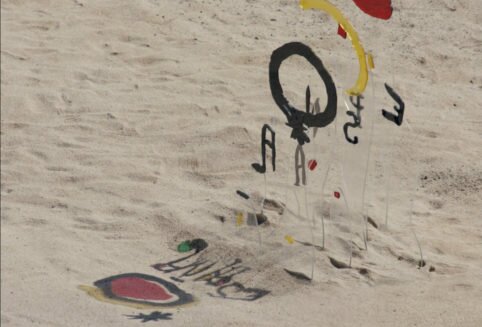Reading on a screen isn’t like reading on paper. Or is it? With this GIF commented by Joan Pons we start our summer special editorial: Reading and August.

A fantastic voyage



By Joan Pons
Yep, you’ve read well: this week’s GIF is about a cauliflower, indeed. In fact, this plant of white, pulpy and eatable head (eatable for some; others are already disgusted by the smell emanating from it when being cooked) is a McGuffin paying homage to Richard Dawkins, the British scientist author of The Selfish Gene, The Blind Watchmaker and The God Delusion.
After recently suffering a minor haemorrhagic stroke, during his convalescence period the famous ethnologist-zoologist-educator-biologist-evolutionary theoretician has had to put up with the blunder/provocation from the Church of England’s Communications Manager, who sent “prayers to Professor Dawkins and his family.” After several years revealing pseudo-scientific caboodles, reminding us on each and every page of his books how lucky we are to live in the era of logos, and not myth, systematically destroying superstitions, capturing ghosts and drawing back veils, Dawkins now had to suffer never asked-for mentions in tweets that reeked of jokes or vendettas.
In order to compensate the balance, the best way to wish the professor to get well soon is acknowledging his influence in my way of looking at scientific processes and even reality in general.
In Unweaving the Rainbow, Dawkins refuted Keats, who assured that Newton had put an end to the poetry of the rainbow by revealing the secret of the decomposition of light and prismatic colours. Considering that any scientific epiphany is cold, serious and dispassionate is wrong: there’s always a side of discovery, of wonder, and of true beauty only denied by those who are afraid of knowledge.
By letting oneself be hypnotised by the cauliflower in this GIF (which seems to never stop growing or, should you prefer it, exploding), one learns to admire the mathematics of nature and its fractal show. It might be necessary a small formal artifice (in this case, a zoom, ad eternum), having read Dawkins or remember what Gaudi said about the shapes of nature a being the most imitable simply because they were the most perfect and beautiful, to notice the geometric wonders we can daily be exposed to without even noticing.
In a cauliflower, in a snowflake, in some seashells, in the leaves of a tree, we find motives to be applauded for their exponential design (repetitions of a symmetric, balance, and harmonic pattern) that observed in detail are a day-to-day celebration of genuine beauty. And we don’t need to look at them through a microscope or going mad with an animated representation of the molecules of the myosin protein transporting a ball of endorphins (this is the way happiness works): the only thing you need to do is opening the bottom drawer of your fridge.



















